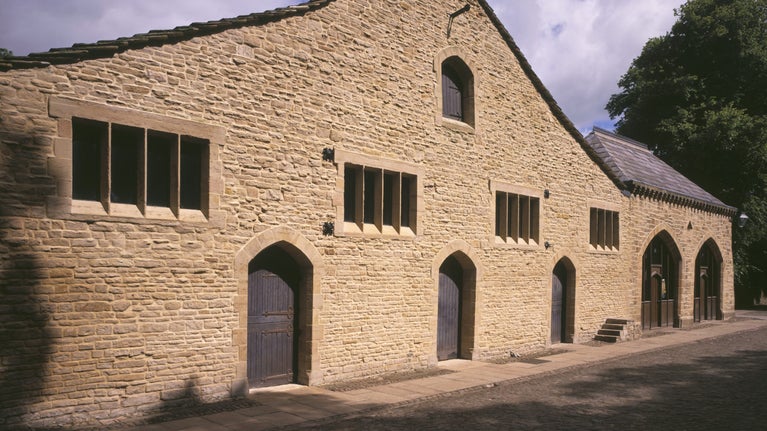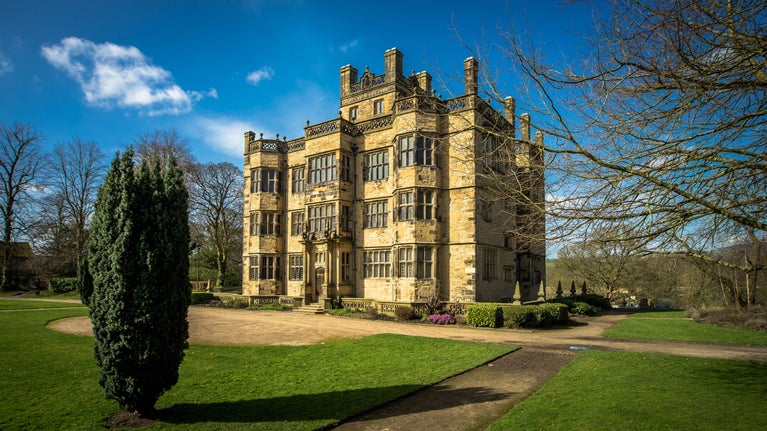What is the Great Barn?
Originally built as a high-status building in 1605, the 100-foot long Great Barn is a rare survivor of a type of building uncommon in Lancashire. The Grade I listed building has been used for a variety of different things throughout its history, from agricultural storage to an indoor training area for Burnley Football Club, and more recently as an arts and exhibition space.
The barn has been described as “one of the finest aisled barns in the North West”. Its roof structure is largely original, and its ox stalls are “possibly the earliest dated example in Britain”.
The building has been closed to the public since 2008.
What are we doing?
We will invest £1.5m to reroof the Great Barn, coach house and toilet block to secure its long-term future and reopen the space for visitors. The roof and timber rafters will be repaired using heritage craft skills in order to stop rainwater leaking through the structure.
Why are we doing this?
As a conservation charity we want to look after historic places for future generations and provide new experiences to visitors. The roof has received a number of temporary repairs over the years, but major works are now needed to secure the long-term future of the building.
Looking after historic places
This project will allow us to secure the long-term future of a 420-year-old Grade I listed building in the heart of Padiham by working with builders with proven heritage craft skills. Through a range of activities and events, the project will offer a chance for the local building and conservation community to develop their knowledge and experience with heritage skills.
Creating a space for local people
The Great Barn has been closed since 2008. Repairing the roof will allow this multi-purpose space to once again open to visitors. We’re keen to work with the local community and partners and would like to start by gathering as many ideas as possible for how this magnificent space could be used in the future. You can help us gather ideas by filling in a short survey (click below).






